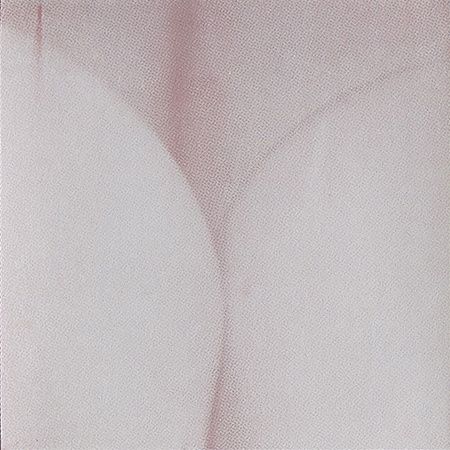
Continuing through April 15, 2023
“Candy Factory,” a luminous exhibition of about twenty-five silkscreen paintings, each densely saturated with color, and works on paper also features their source material, three polaroid photographs. This work is the fruit of a collaboration between Eric Heist and the late Breyer P-Orridge. P-Orridge is better known as the great provocateur, Genesis P-Orridge, a key figure at the intersection of performance art and the Punk movement. (A recommended read is “Performance Art: From Futurism to the Present” [1979, 2001] by Roselee Goldberg.)
P-Orridge was well known as the cofounder with Cosey Fanni Tutti of the performance art collective COUM Transmissions, the seminal industrial band Throbbing Gristle, and the pop rock band Psychic TV. These groups employed confrontational performance strategies to deal with sexuality, sex work, and pornography as avenues of expression for their personal obsessions while expanding boundaries related to freedom of expression and censorship. P-Orridge gradually reduced their musical activities to concentrate on visual and performance practice, especially after marrying “Lady Jaye” Breyer and embarking on their “Pandrogeny Project” under the new name, Breyer P-Orridge. The couple sought to merge physical and spiritual identities through, among other things, radical surgery.
Despite the supposed maturing of social attitudes toward such issues, a major print news outlet in Dallas recently pulled an assignment to cover this exhibition once an editor reviewed the images, citing a conflict with their so-called “family values” orientation. This spineless attitude, of course, about challenging content represents one of many recent examples of pandering to a vast network of right wing cancel culture activists.
The three Polaroid snapshots used here by Heist and Breyer P-Orridge as source material are reproduced in various permutations with the use of the silkscreen process and the six primary and secondary colors. These veritably abstract pop art-based pieces feature bright contrasts from image to image, and bring to mind the candy — tasty on the tongue and visually desirable — alluded to in the title of the exhibition. The title also fittingly refers to transgender icon Candy Darling, a Warhol Factory superstar.
Breyer P-Orridge took the originals as part of a ritual performance act. They look like two images of knees and perhaps a torso with breasts, but in soft focus without anatomical detail or gender specificity. In semiotic terms the Polaroids are the referents and the silkscreens, completely transformed through the process, become new entities in the form of signs. These semiotic signs are imbued with their own aesthetic power and ability to signify desire and its attendant emotions.
Each piece (all untitled and dated 2020, the year of P-Orridge’s death) begins with a base color, drawn from red, violet, blue, green, yellow, and orange, which is then overlaid with the actual image done in one of the remaining colors in sequence. In a stunning arrangement of twelve of the 22 by 22 inch pieces, three rows with four silkscreens each advance along the wall. Each successive image is tilted ninety degrees, creating a visual melody.
Four pieces arranged in two rows of two, one above the other, are particularly bold. Measuring 44 by 44 inches, they are the largest works in the exhibition. Done in a light cyanic blue and strong on line with wide expanses of bright space, they fill in the gaps between what were anatomical features in the originals.
Originally, Genesis P-Orridge sought to subvert and provoke through avant-garde musical performance. As Breyer P-Orridge they advanced the strategy, still aiming toward subversion, but with images intended to entice us to accede to their version of sensuality, love, and desire.
This has everything to do with a version of the viewer’s gaze. In her famous essay “Visual Pleasure and Narrative Cinema” Laura Mulvey theorizes about a dominant male gaze at work in the reception of moving images, a gaze that should be identified and supplanted. If we step back to still images, like the ones in this exhibition, we find in them an aesthetic proposition that suggests a new formulation, the “pandrogenic gaze” that privileges both binary and non-binary genders as viable candidates to participate in the pleasure of looking and being looked at with desire.
